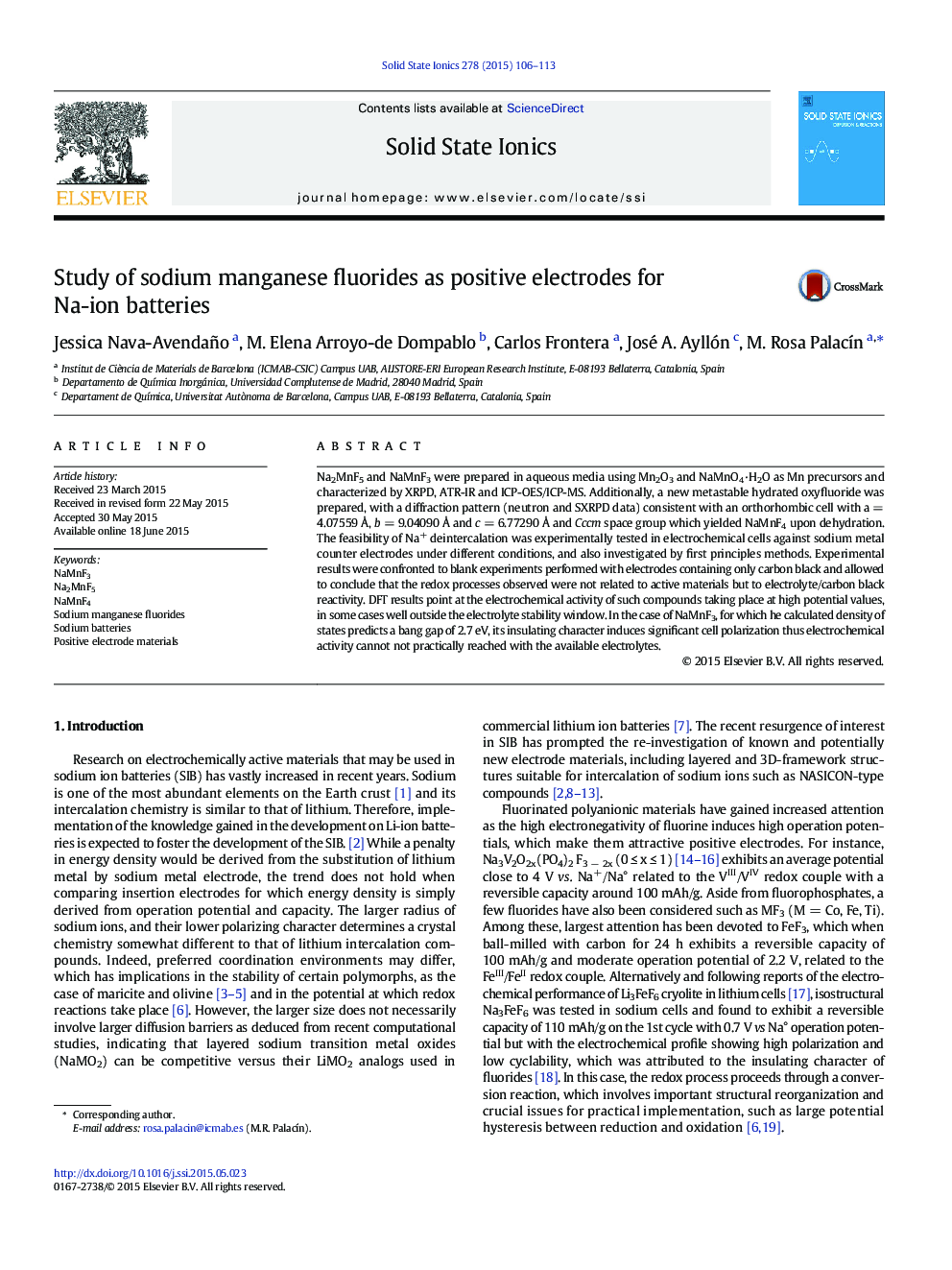| Article ID | Journal | Published Year | Pages | File Type |
|---|---|---|---|---|
| 1295703 | Solid State Ionics | 2015 | 8 Pages |
•Na2MnF5 and NaMnF3 and a new metastable oxyfluoride were prepared in aqueous medium.•The feasibility of Na+ extraction was investigated experimentally and by DFT.•Na2MnF5 and NaMnF4 exhibit expected potentials outside electrolyte stability window.•Na2MnF5 decomposes into NaMnF3 when ball milled for electrode preparation.
Na2MnF5 and NaMnF3 were prepared in aqueous media using Mn2O3 and NaMnO4·H2O as Mn precursors and characterized by XRPD, ATR-IR and ICP-OES/ICP-MS. Additionally, a new metastable hydrated oxyfluoride was prepared, with a diffraction pattern (neutron and SXRPD data) consistent with an orthorhombic cell with a = 4.07559 Å, b = 9.04090 Å and c = 6.77290 Å and Cccm space group which yielded NaMnF4 upon dehydration. The feasibility of Na+ deintercalation was experimentally tested in electrochemical cells against sodium metal counter electrodes under different conditions, and also investigated by first principles methods. Experimental results were confronted to blank experiments performed with electrodes containing only carbon black and allowed to conclude that the redox processes observed were not related to active materials but to electrolyte/carbon black reactivity. DFT results point at the electrochemical activity of such compounds taking place at high potential values, in some cases well outside the electrolyte stability window. In the case of NaMnF3, for which he calculated density of states predicts a bang gap of 2.7 eV, its insulating character induces significant cell polarization thus electrochemical activity cannot not practically reached with the available electrolytes.
